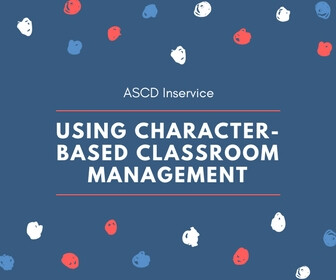Sitting in a 10,000-seat auditorium, where the air was thick with tension, my hands were clammy writing the last paragraph of an essay for the SAT exam at the Asia World-Expo in Hong Kong. My heart raced intensely as proctors shouted, “Fifteen minutes left!”
For many Chinese students, this scenario is all too familiar. Growing up in China, I was taught that achieving high grades was the golden ticket to securing a place at a prestigious university, which, in turn, could significantly determine our fates. The Gaokao, China's grueling national undergraduate admission exam, is notorious for being one of the world's most challenging standardized tests. From an early age, I was swept up in a relentless wave of competition and intensity that characterized my entire school experience.
After undergoing traumatic experiences with standardized tests like the SATs, APs, and TOEFL exams as an international student, and finally making it to a U.S. college, I have always been fascinated by how American students deal with their standardized tests. This interest led me to work as a research assistant with Professor Tanishia Williams at Brandeis University, studying disparities in curriculum, standardized testing, and teaching methods across NYC and Boston public schools. This experience sparked a personal project to investigate how standardized testing affects the mental health and academic engagement of students of color. What are the experiences of U.S. students—particularly students of color—when it comes to standardized testing? How do they navigate this landscape? What unique challenges do they face, and how do they perceive the fairness and equity of these exams? To answer these questions, I am currently conducting interviews with students, collecting data to gain insights into their perspectives.
The Pressure Cooker of Performance
Engaging with U.S. students about their standardized test experiences in public school systems has been incredibly enlightening. Many of the students I talked to expressed feelings of being trapped under immense pressure to perform well on these exams. These tests are not just another academic hurdle; they are perceived as make-or-break moments that could significantly impact future opportunities, despite the U.S. education system's emphasis on extracurricular activities.
These tests are not just another academic hurdle; they are perceived as make-or-break moments that could significantly impact future opportunities.
"The stakes are very high since I have to pay for the exams myself," one student confided. This pressure is even more pronounced for students of color and those from low-income backgrounds, who face additional societal and educational challenges. Their stories highlight the pervasive stress and the significant sacrifices they make to succeed in an often inequitable system.
Imagine the burden of knowing that a single test score can affect your chances of getting into a good college or getting a scholarship. This stress can manifest in sleepless nights, anxiety attacks, or a constant sense of inadequacy. The argument that these tests are a fair measure of intelligence and potential only adds to the burden of making students feel that their full worth is judged by a few hours of testing.
"It felt like my education was no longer about learning, but about performing well on these tests," says Kai, a Harvard graduate who went through the whole standardized testing experience starting in elementary school. Despite his strong academic abilities, the stress of preparing for the PSAT, SAT, ACT, and AP exams was still intense.
“The stress was unbelievable, and it was hard to balance test prep with my regular schoolwork and extracurricular activities,” he said.
Kai's high school experience proves it. Despite his natural ability and excellent academic record, he often found himself exhausted from endless test preparation. The joy of learning was replaced by a sense of responsibility, a necessary but pointless task he had to endure to achieve his goals.
"I love school, but the focus on exams makes it hard to stay passionate about learning," he admits.
This pressure is often more significant for students of color, who may also face systemic inequities and lack of access to adequate test preparation resources. Kai noted that many of his white, middle-class classmates came from more well-resourced middle schools and had access to expensive test preparation courses and materials. He had to rely on free resources and self-study, which, while effective to a certain extent, was no match for the comprehensive preparation his peers received.
This inequity in readiness not only affects test scores, but also undermines students' commitment to their education. When students feel they are disadvantaged, it can lead to frustration and disengagement. This gap can exacerbate stress and feelings of hopelessness, as students from lower income families may feel that they are competing on an uneven playing field.
In addition to academic pressure, there is also social pressure. The competitive nature of standardized tests can create a stressful environment among peers. Students may find themselves comparing grades and learning strategies, which can lead to a toxic atmosphere of competition, rather than cooperation.
Reimagining Assessments
Standardized testing has several drawbacks: It fails to accurately measure students' potential, it's overly affected by students' test-taking mindset and motivation, and it perpetuates socio-economic disparities. Given these issues, we must consider more comprehensive and equitable assessment methods.
1. Incorporate projects-based assessments
One approach is to incorporate project-based assessments that allow students to demonstrate their knowledge and skills through hands-on projects and demonstrations. These assessments can provide a more holistic view of a student's abilities and promote deeper engagement with the material.
“I tend to enjoy doing projects rather than taking a test because it more accurately assesses my understanding and critical thinking of the topics that I have learned in a semester instead of merely assessing my memorizing ability and the capacity to perform under pressure,” shared one student in a survey response.
2. Emphasize formative rather than summative assessments
Formative assessments—such as quizzes, class participation, and ongoing projects—provide continuous feedback and help track student progress. Not only does this approach reduce the high-stakes stress associated with a single test, but it also encourages a growth mindset where students view learning as an ongoing journey rather than a series of pass/fail events.
3. Value creativity, critical thinking, and problem solving
Combining assessments that value creativity, critical thinking, and problem-solving can better capture students' potential. For example, portfolios allow students to present a range of work and reflect on their learning process. Recent research has shown that culturally responsive and art-based interventions, such as those that encourage students to create digital art during classroom assessments, can enhance students' moods and sense of connection to their school.
4. Address systemic inequalities
It is critical to address systemic inequalities that affect students of color. Providing equal access to high-quality education, including advanced courses, extracurricular activities, and test preparation resources, can help level the playing field. This requires investments in underfunded schools and communities and policies that promote diversity and inclusion in education.
We need an approach to education that goes beyond test scores and fosters a love of learning, critical thinking, and creativity.
Rethinking standardized testing is not just about finding new ways to measure student performance; It's about building an education system that values and nurtures the unique abilities and potential of each student. As the students’ perspectives I have interviewed illustrate, we need an approach to education that goes beyond test scores and fosters a love of learning, critical thinking, and creativity. By adopting a more comprehensive and equitable approach to assessment, we can ensure that all students, regardless of their background, can succeed and thrive.








